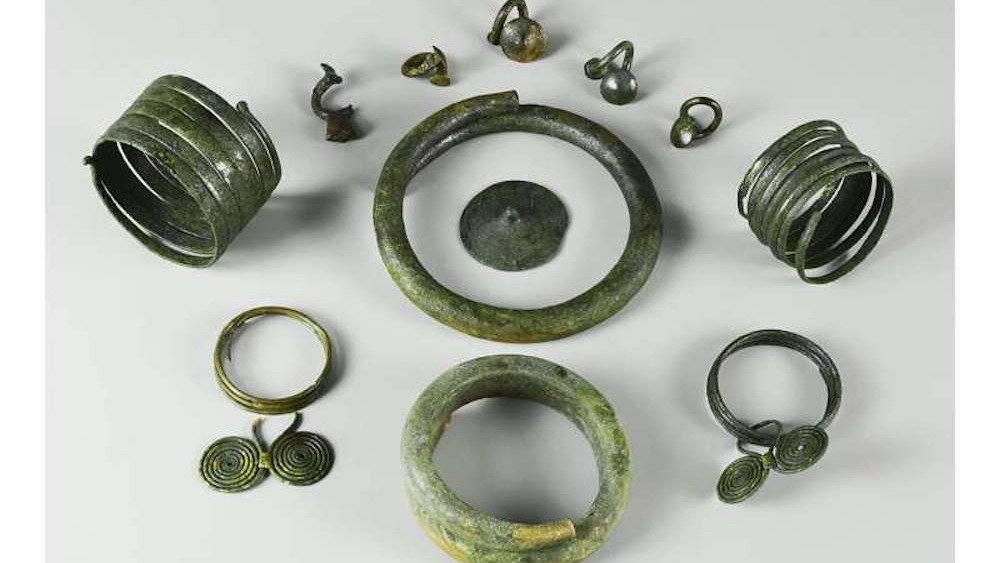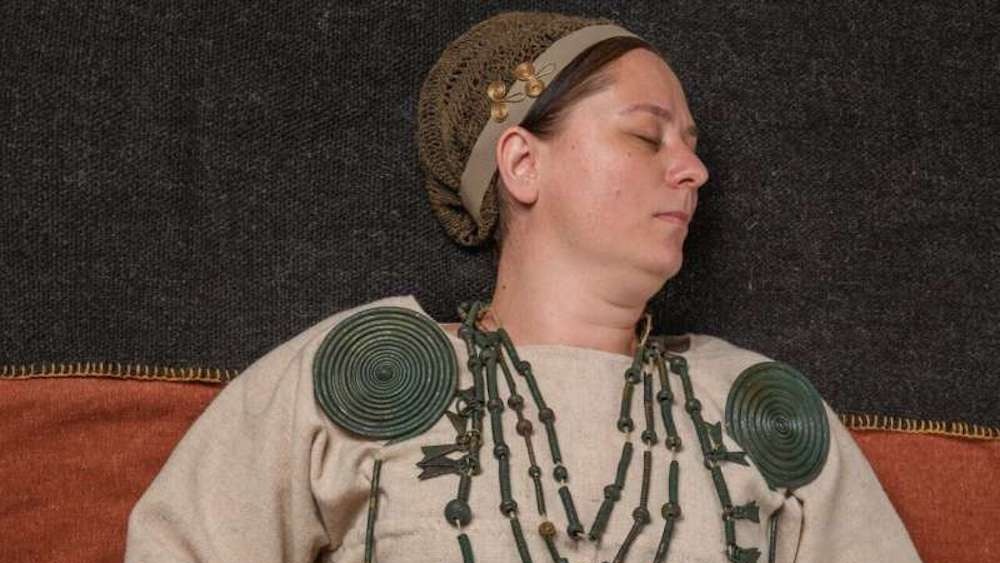Hoard of Bronze Age jewelry discovered in Poland was part of ancient water burial ritual, study finds
A collection of metal jewelry and human remains found at a dry lake-bed site in Poland were part of an ancient ritual.

Archaeologists in Poland have discovered a collection of more than 550 pieces of Bronze Age jewelry that were once part of an ancient burial ritual.
Known as Papowo Biskupie, the dried-out lake bed site was occupied from roughly 1200 to 450 B.C. by the Chełmno group, a community from the larger Lusatian culture that lived in northern Europe during the Late Bronze Age and Early Iron Age, according to a study published Wednesday (Jan. 24) in the journal Antiquity.
The Lusatians are best known for their ritual depositions of metal hoards in bodies of water. However, the Chełmno group was not known for engaging in this practice.
But the new jewelry finding, made by metal detectorists in 2023, upends that perception.
"The scale of metal consumption at the site is extraordinary," study co-author Łukasz Kowalski, a postdoctoral researcher of archaeology at the AGH University of Science and Technology of Krakow, told Live Science in an email. "Until now, we thought that metal was a weak partner in the social and ritual strategies of the Chełmno group, in contrast with the metal-hoarding madness [practiced by the other Lusatians]."
Related: Stash of 'eye-catching' Bronze Age jewelry discovered by metal detectorist in Swiss carrot field
However, the discovery of this cache of metal jewelry — which includes a variety of arm and neck ornaments, as well as a multistrand necklace with oval and tubular beads surrounding a swallowtail-like pendant — has led researchers to change their viewpoint, according to a statement.
Sign up for the Live Science daily newsletter now
Get the world’s most fascinating discoveries delivered straight to your inbox.
"Our findings reflect the increasing role of metal in social and ritual life of [the Chełmno group], resulting in a shift from the deposition of human remains to metal offerings in the local wetland landscape," Kowalski said.

The researchers concluded that many of the metal artifacts were created by members of the local community. But some, including one of the beads in the necklace, were crafted using outsourced materials.
"The bead is made of low-magnesium glass that was sourced from the Eastern Mediterranean region," Kowalski said. "This increases the use of evidence that power-elites of the Chełmno group became parties to a metal trading network that connected much of the European continent in the 1st millennium B.C."
In addition to the jewelry, the archaeologists unearthed the skeletal remains of at least 33 individuals at the lake bed. However, radiocarbon dating revealed that the human remains were buried before the metal deposition, which offers further evidence that the Chełmno group's "belief system later came into line with the rest of the region," according to the statement.
As part of the study, the researchers created a hypothetical model of a Chełmno woman wearing some of the metal jewelry.
"Our discovery opens a new window for exploring the social and ritual practices of the Chełmno group and reflects the complex interplay between deposition of human remains and metal objects in wetlands," Kowalski said. "This discovery may signal how metal and human depositions could be used to regulate social relations in the Chełmno group and to demonstrate their local identity."
Jennifer Nalewicki is former Live Science staff writer and Salt Lake City-based journalist whose work has been featured in The New York Times, Smithsonian Magazine, Scientific American, Popular Mechanics and more. She covers several science topics from planet Earth to paleontology and archaeology to health and culture. Prior to freelancing, Jennifer held an Editor role at Time Inc. Jennifer has a bachelor's degree in Journalism from The University of Texas at Austin.










